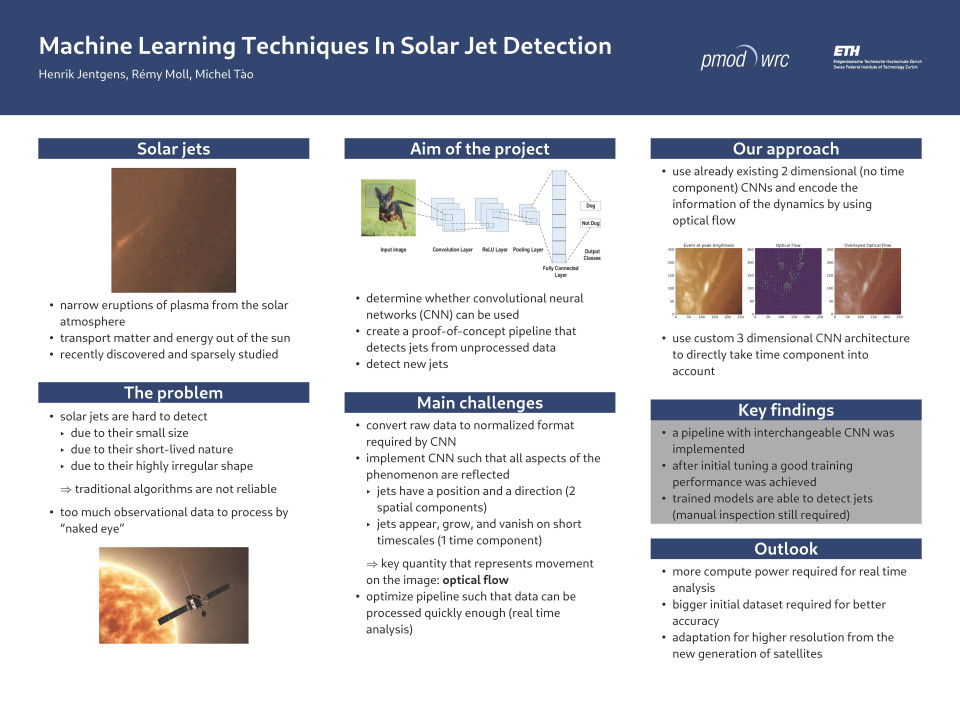The Sun is the driving factor for many phenomena on Earth, such as the origin of life. Thus, understanding the characteristics of our host star is crucial for many disciplines, be it environmental science, ecology, space sciences or astrophysics. Many fields therefore rely on accurate modeling and prediction of the Sun's behavior and features. Solar features are various structures found on the surface of the Sun, ranging in size from small bursts (European country size) to large coronal mass ejections (size of a quarter of the space between Earth and the Sun).
Among these features are solar jets, transient, small-scale eruptions of plasma in the solar atmosphere. Despite their small scale, they are numerous and thus, a few questions arise: What influence do jets have on solar wind, the stream of particles generated continuously by the solar atmosphere? Do jets influence space weather? Space weather refers to the environmental conditions in space that can affect technology and human activities in or near Earth's atmosphere.
Solar jets occur in highly dynamic and complex solar environments. Thus, they are usually detected manually by researchers based on visual analysis of satellite images. However, recent advancements in solar imaging satellites, such as the Solar Orbiter probe, have resulted in the generation of vast amounts of high-resolution data of the Sun's atmosphere. The large data volume renders traditional manual analysis methods impractical, highlighting the need for automated detection techniques.
This work in the context of the ETH Studios program explores this challenge of solar physics through an interdisciplinary approach with machine learning. We aim to detect solar jet events from satellite image data using machine learning by utilizing the dynamics of the processes and incorporating them into different neural network architectures.
The machine learning approach of this work offers a promising solution for the automatic detection of solar jets. Our implementation shows that a more efficient survey of the data is possible without the loss of accuracy. This will enable a more thorough statistical analysis of jets and ultimately enhance our understanding of dynamic solar processes. Moreover, this method of detection is not limited to solar physics and has potential applications in other fields where dynamic features have a defining role.
